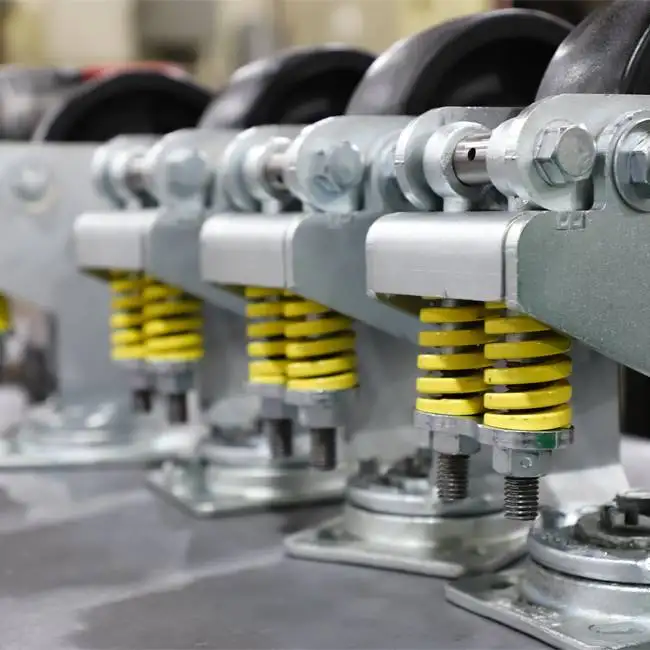

Line delivery carts play important roles in many industries across the country and the world. These carts are used to safely, quickly, and efficiently deliver parts to various areas of a facility. Much like a train (but on wheels), these carts are most efficient when they are used with the proper casters. Here’s what you need to know about using heavy duty steel casters with line delivery carts.
Though line delivery carts are found in various industries, perhaps the most common use is in the automotive manufacturing industry. These carts make it more efficient to move heavy parts from one location to another. They save employees time and reduce the risk of injury by automating much of the movement process, too. The weights carried by these carts are often quite heavy, and because of this, heavy-duty casters are often required. Choosing the right heavy-duty steel casters ensures the safest possible experience.
In fact, in order to boost production and meet their quotas, many facilities will run their manufacturing facilities for three shifts – 24 hours a day. Carts move back and forth nonstop to be loaded before delivering the load to another area. This process repeats all day without fail, and a failed caster can cause serious issues. A single failed caster can result in a stopped cart, and that can shut the whole plant down until it is repaired.
Line delivery carts are pulled by tugs, which help to further automate the delivery process and reduce the risk of injury for operators. The longer the chain becomes, the more friction that occurs with the carts toward the end of the train. This can slow things down significantly and it puts a lot of strain on the casters on the tail carts, too. Choosing the right casters from the outset can reduce that friction and extend the life of all the casters on the cart.
It’s also important to consider that many of the racks and carts are loaded by forklift operators. This is safer and faster than loading them by hand, but the sudden impact of thousands of pounds of pressure can have a negative impact on the wrong set of casters. If the carts are set up in the mother-daughter configuration, which means the daughter cart is pulled perpendicular to the mother cart, this can put the caster wheels in a vulnerable position where they can be hit by debris and other objects. Fortunately, choosing the right heavy-duty steel casters is the best way to prevent these problems.
Ensuring that line delivery carts operate as efficiently as possible significantly boosts plant productivity. Things like shock absorbing casters can go a long way, too. These casters tend to last far longer, and when they are combined with friction-reducing tread and other ergonomic features, they can outlast more traditional casters and vastly improve the speed and efficiency of line delivery carts – no matter the capacity or direction.